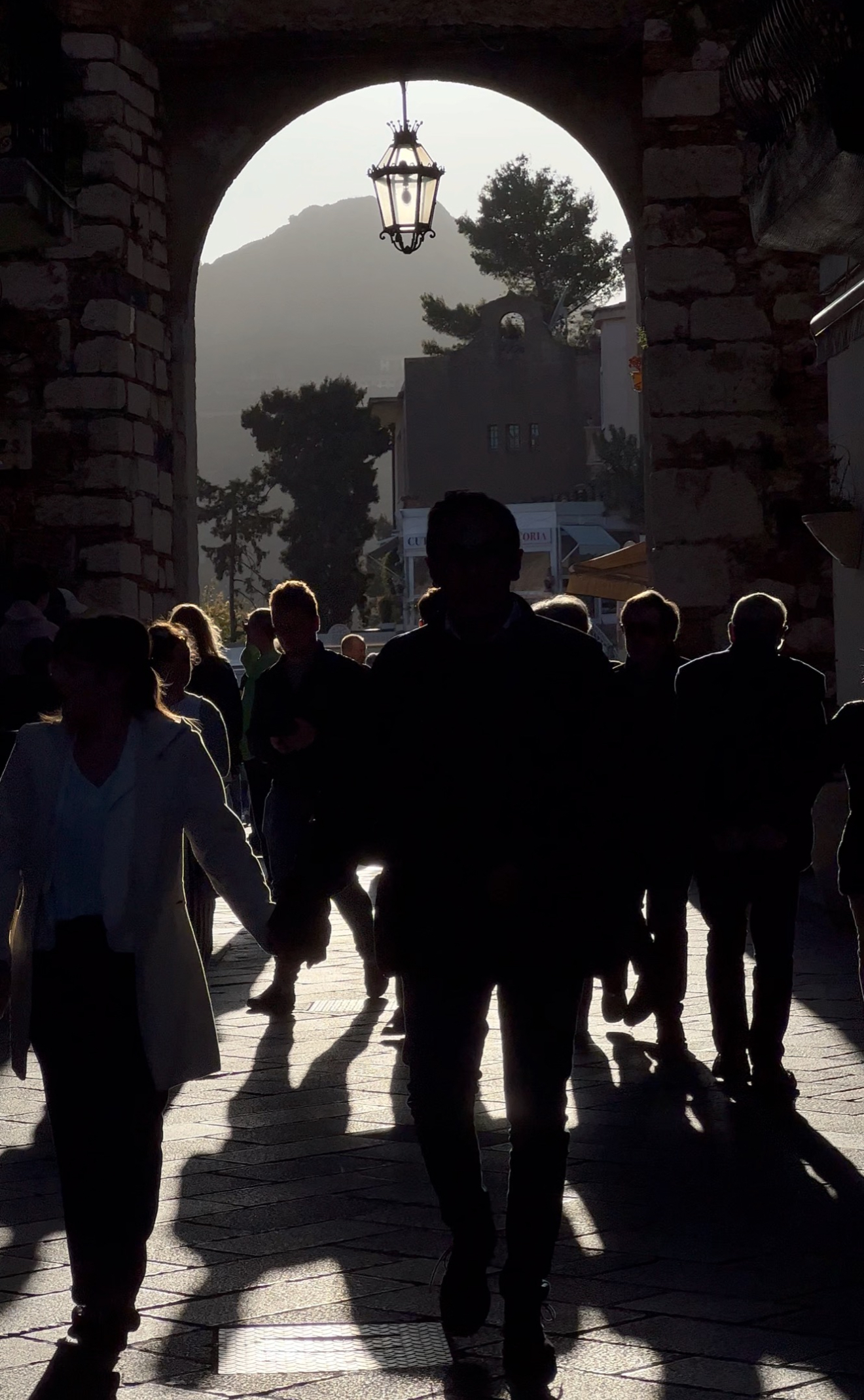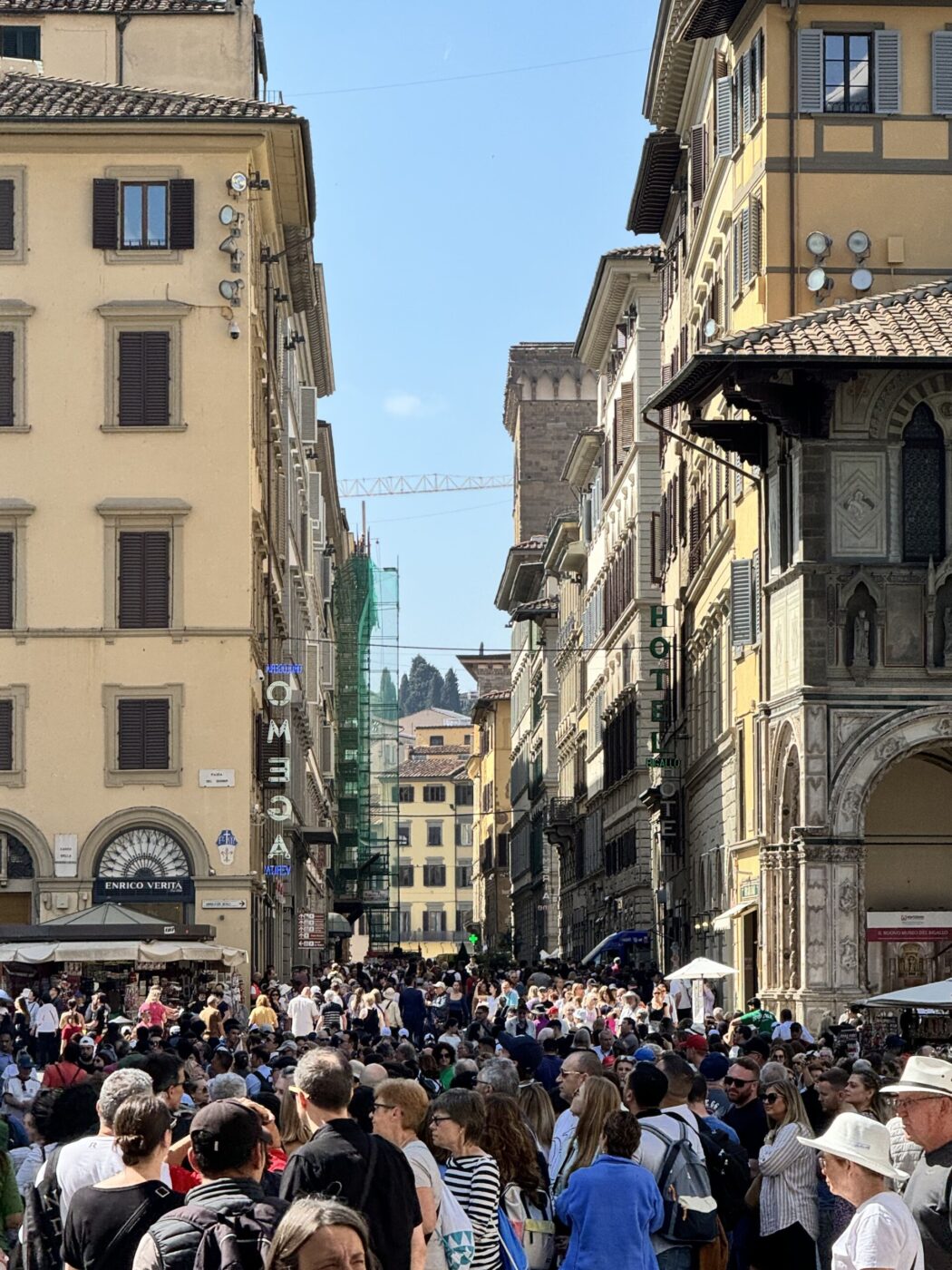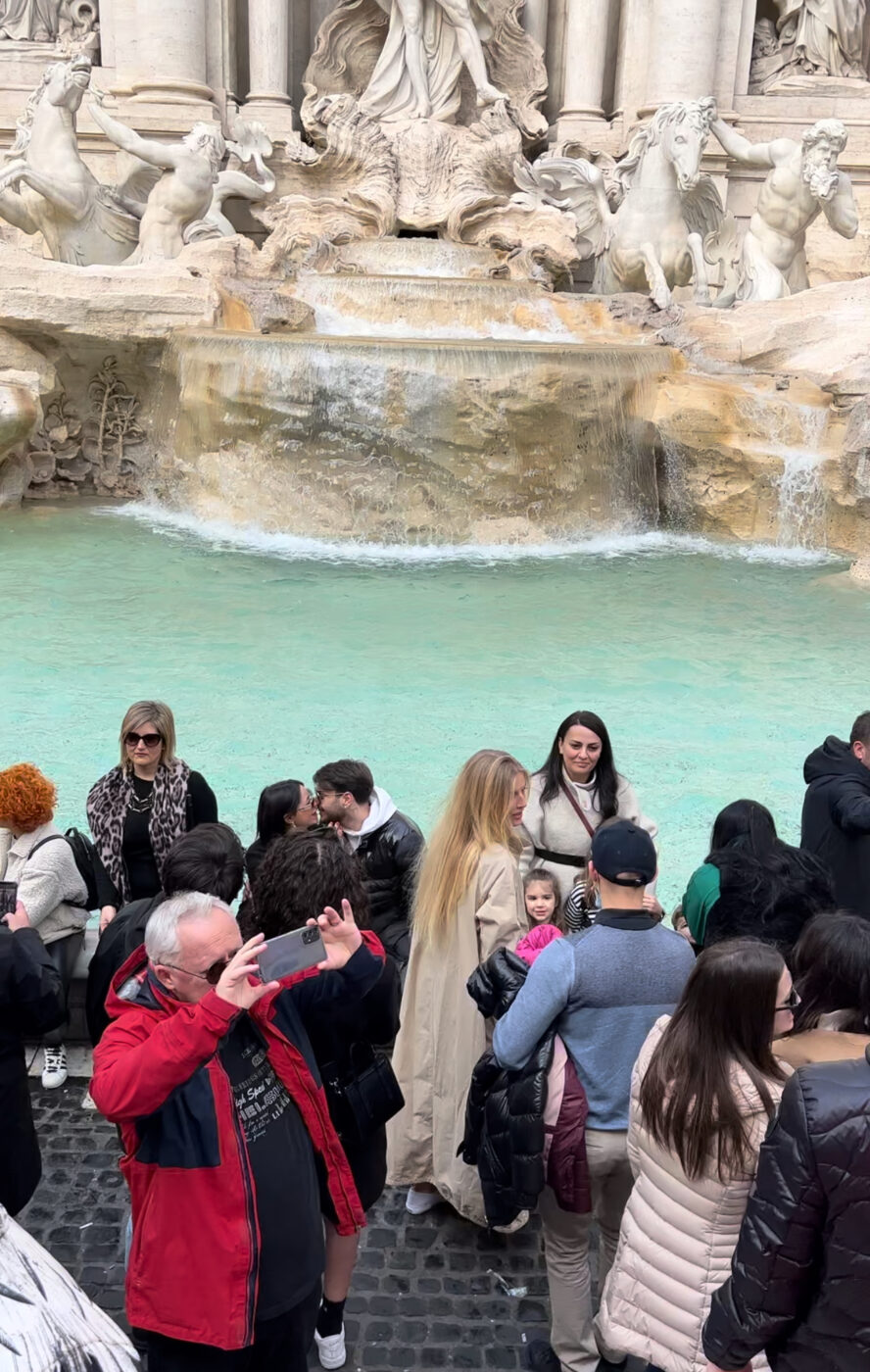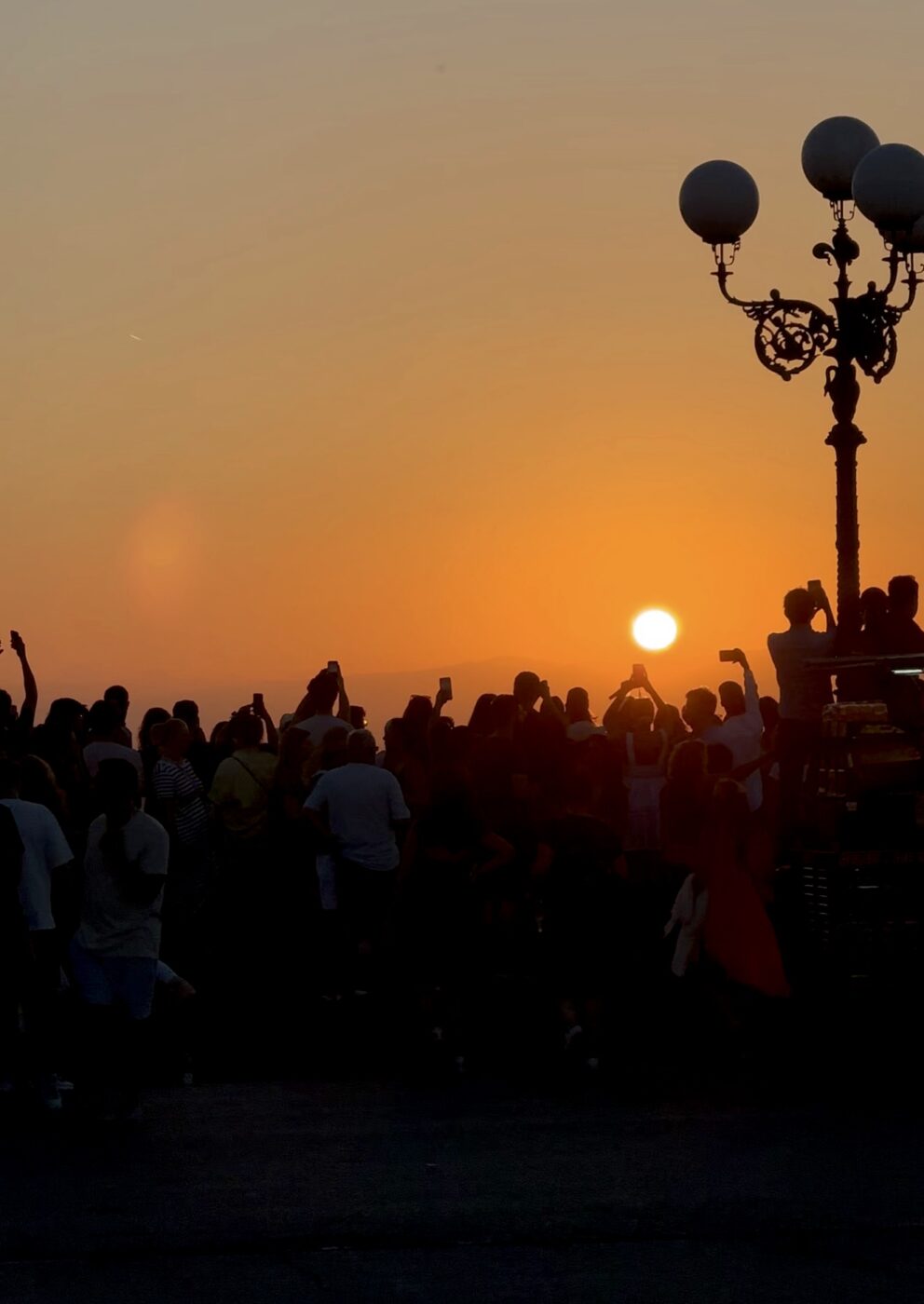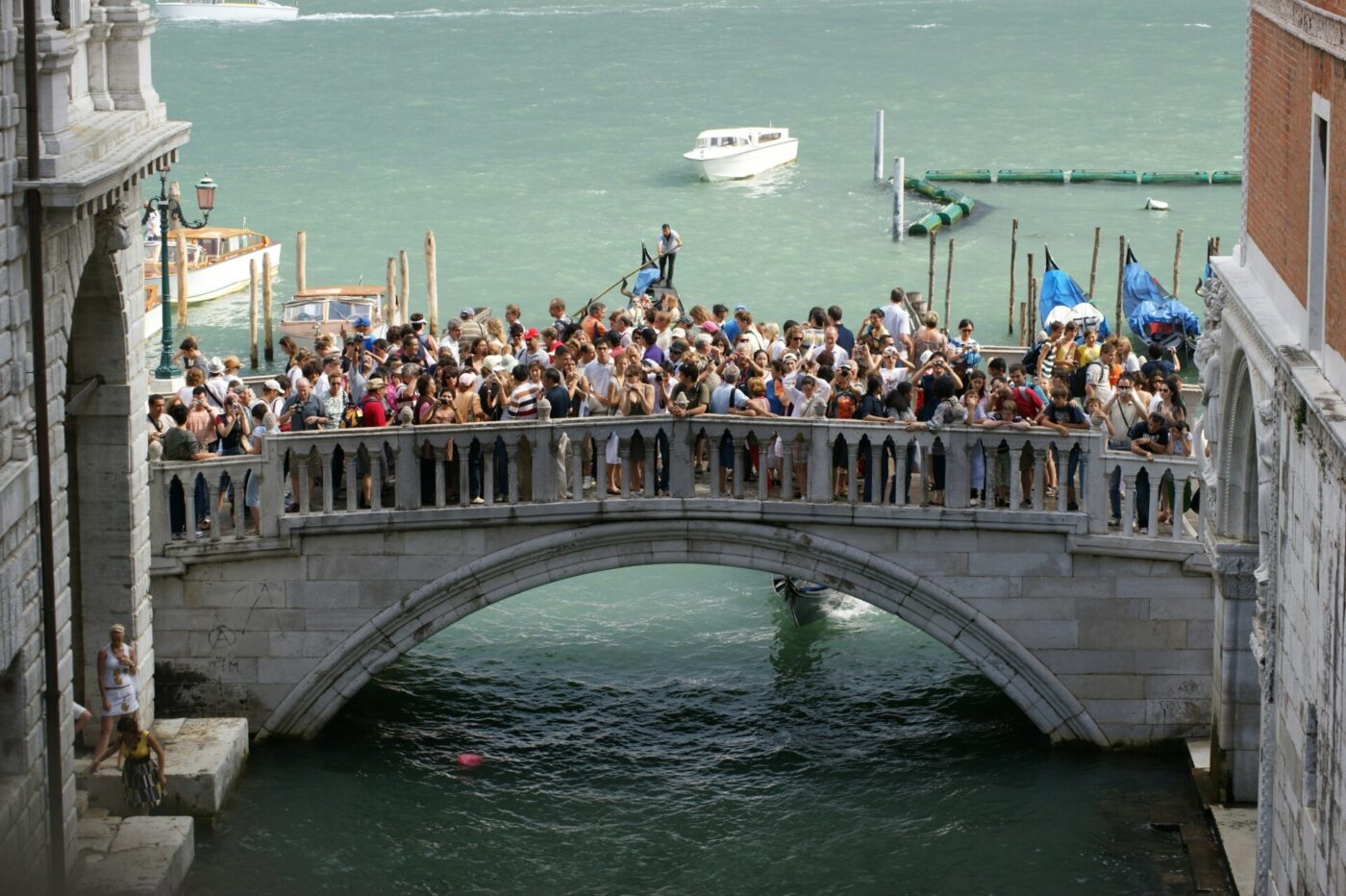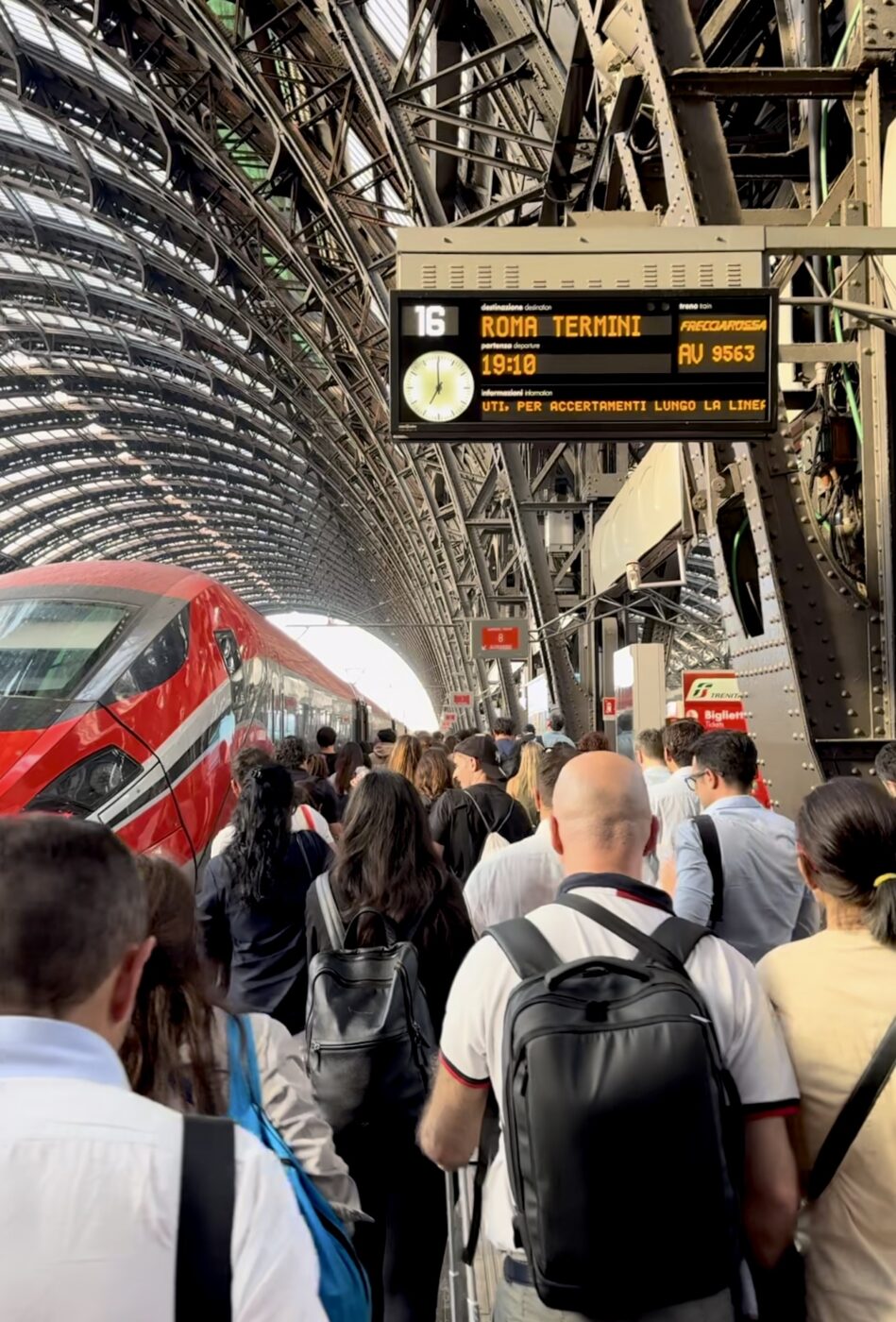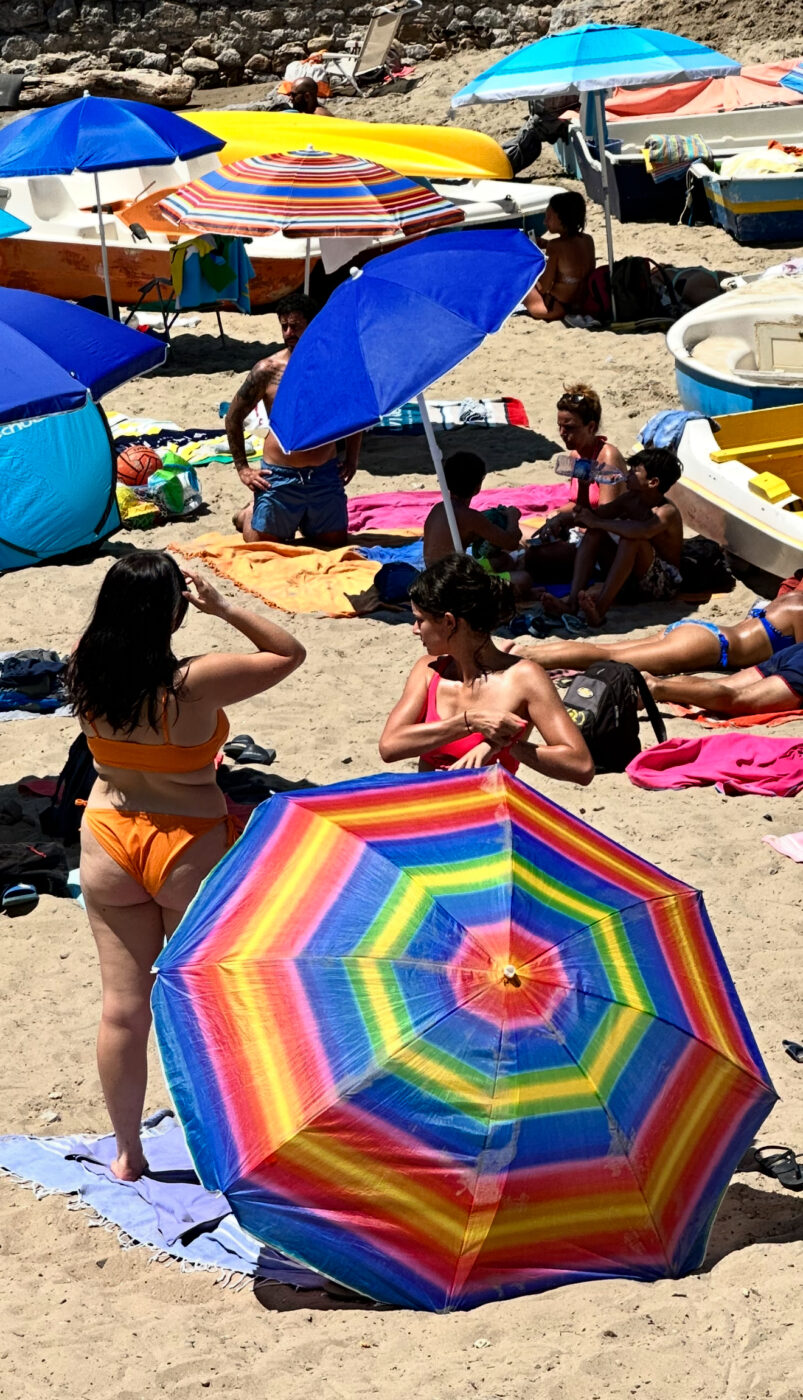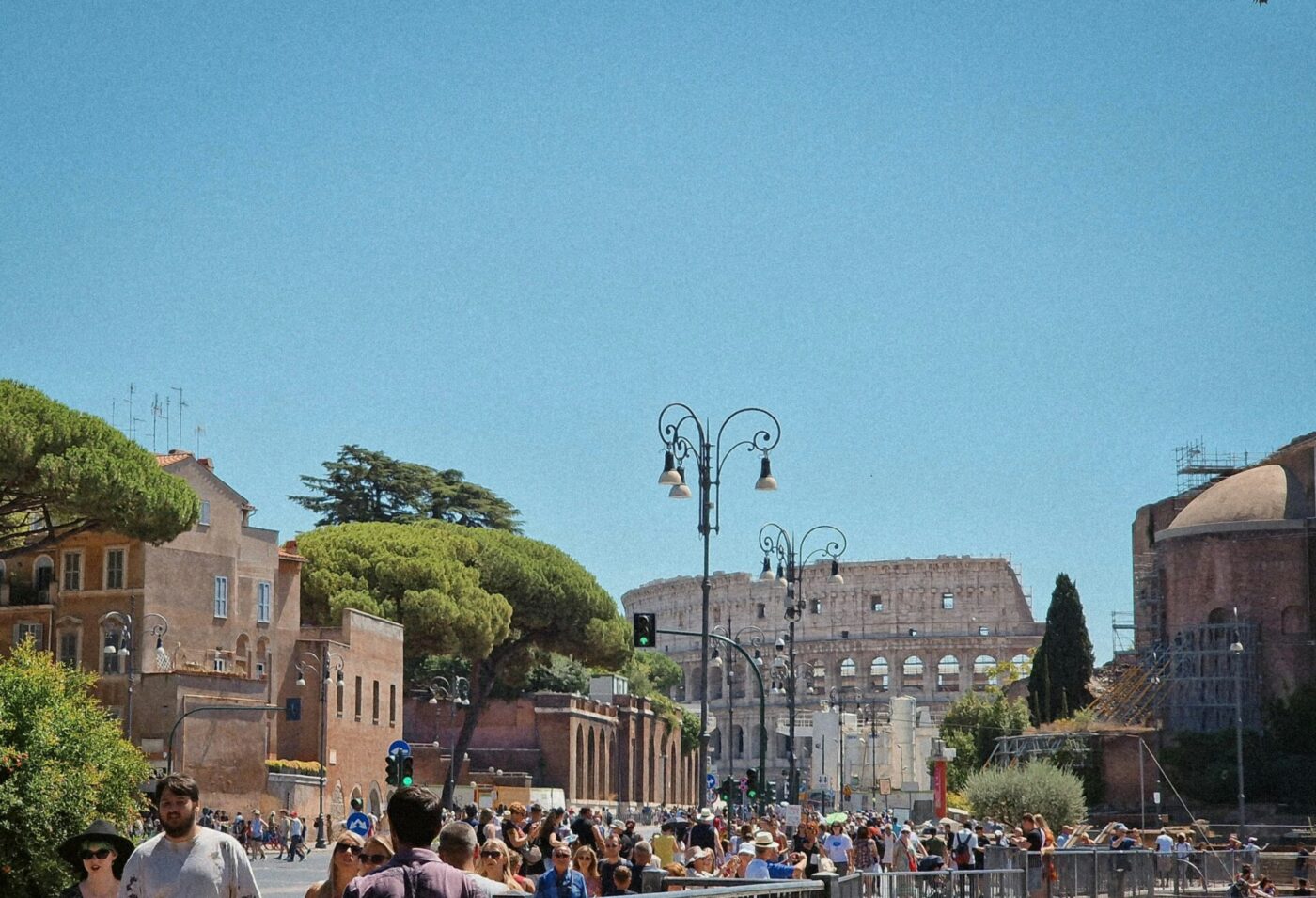If there was any doubt in our mind from the masses crowding seemingly every piazza in every major Italian city, the data tells us the same story: tourism is back.
In 2024, roughly 1.4 billion tourists traveled internationally, essentially returning to pre-pandemic levels, according to UN Tourism. That also came with real money behind it—tourist spending hit a total of $1.6 trillion last year. Italy is among the world’s top five tourism earners, and it saw a 23% increase in tourism revenue for most of last year compared to 2019.
But despite their sheer numbers, the tourists that come to enjoy this country’s gleaming waters, its rugged mountains, and the many art capitals that dot its landscape are only seeing a small fraction of the actual country. Roughly 70% of international tourists are centered on only one percent of Italy’s territory, per data presented at a 2023 cultural tourism conference.
“On the other hand, that means that 99% of the destinations in Italy have an incredible capacity to grow,” said Visit Italy CEO and founder Ruben Santopietro last month.
Santopietro’s point is a common one in the quest to find a sustainable solution to tourism—don’t discourage tourists from coming altogether, just direct them to lesser-known spots, ideally redistributing the crowds.
This would seem to be a logical counterpoint, except for the fact that it often backfires. Cities with small populations and little tourism infrastructure can be woefully unprepared for hordes of people descending on their ranks. This notably happened in January in the mountain town of Roccaraso in Abruzzo, when Neapolitan TikToker Rita de Crescenzo posted footage from the ski resort, imploring her followers to visit. Soon enough, 260 buses had arrived from Naples and Campania carrying more than 10,000 tourists, according to The Guardian’s Angela Giuffrida, leading to a back-up of lines and lines of people.

Piazza Del Duomo is Florence's most mobbed piazza
What happened at Roccaraso is not an isolated incident. In cities that are far more accustomed to mass tourism, like Rome and Florence, the very act of tourism itself can still have harmful impacts on both the environment and residents’ ability to continue living there. That tourism contributes to a rising cost of living and climate change perhaps goes without saying—a 2024 study found that global tourism emissions in 2019 represented 8.8% of total greenhouse gas emissions worldwide.
At the same time, it is the residents themselves who are sometimes declaring “enough.” Last July, thousands of protesters took to the streets of Barcelona with signs that read, “Tourist, go home,” and “Barcelona is not for sale.” Similar efforts occurred in Mallorca and the Canary Islands. In Florence, protesters used an early November night to tape red Xs on top of hundreds of lockboxes in the city center that house keys for short-term rentals—“Let’s save Florence so we can live there” was printed on the tape. Activists argue that mass tourism is hiking up housing prices and altering the fabric of these cities as more and more homes become short-term rentals for tourists.
A 2021 academic study looking at the effect of tourism on Croatia’s housing affordability found that it was the seasonality of tourism, rather than simply the amount of tourists, that had a strong impact on reducing affordability. Still, researchers note that tourist destinations that push their own locals out of the center “lose their authenticity and appeal that contributed to their image that attracted visitors in the first place.” Italian cities are grappling with this very emptying of their historic centers, especially Florence, where average monthly rental prices rose by 42% between 2016 and 2023, according to figures cited by former mayor Dario Nardella.
This year, Italy expects more than 35 million visitors for the Jubilee, according to numbers cited by its Minister of Tourism, though that could increase if mourners arrive in the city to grieve the recent death of Pope Francis.
So in a world in which tourists still very much want to travel, the question is perhaps how sustainable tourism can actually exist.
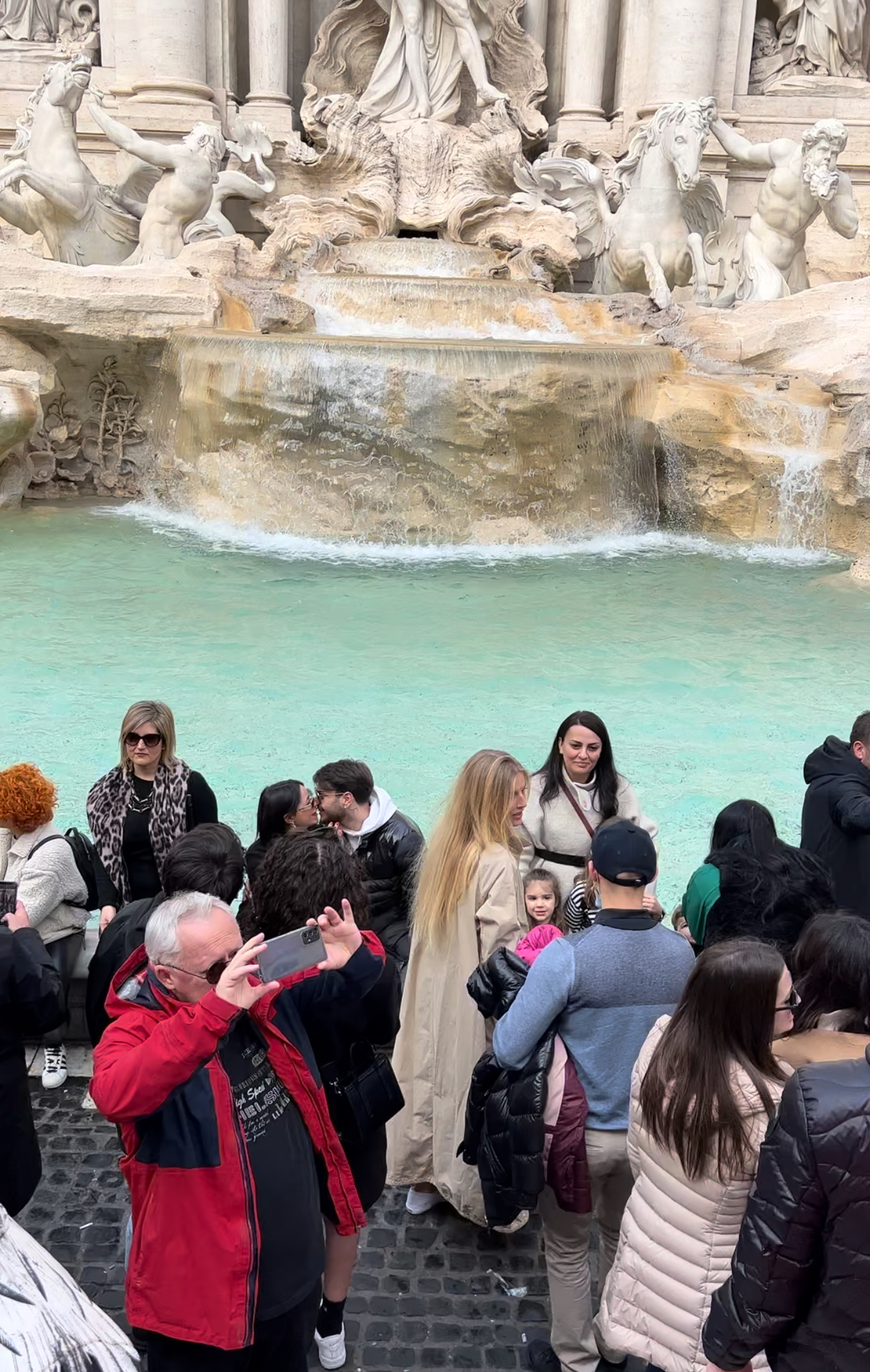
Impossible not to get someone else in your photo at Rome's Trevi Fountain
The concept of sustainable tourism first started to be batted around in the 1990s, when the United Nations recommended that its Commission on Sustainable Development put together an action plan on sustainable tourism, concerned about both the industry’s long-term economic and environmental impact.
“There were hundreds of potential examples that we all had to look at at that time to define sustainable tourism,” said Megan Epler Wood, the managing director of Cornell University’s Sustainable Tourism Asset Management Program, who influenced that process as the founder of the first international NGO dedicated to ecotourism. “What it ultimately came out as being is basically both industry and government working together to implement the use of places around the world for tourism in a way that doesn’t harm local people and ideally benefits local people and protects resources.”
But in the last decade, Epler Wood has seen a stark change in the way both citizens and governments have reacted to tourism. The tourism industry, after all, now makes up roughly 10.3% of the global domestic product, up 13% from 2019, and is slated to reach 11.5% of the GDP by 2035. Public tourism agencies that were once tasked with simply marketing tourism now have another mandate: manage it.
In particular, Epler Wood’s research has focused on Ambergris Caye, a heavily-touristed island in Belize. Despite record-breaking visitor numbers, the government was not able to support the amount of vacationers.
“Ambergris Caye was in a big deficit—they didn’t have the money they needed to manage tourism. They did have a lot of regulatory assistance from the capital, but they needed to design new regulation,” Epler Wood said. “This is the same situation that every place in the world is facing.”
One of the problems, according to activists, is that the tourism sector is listening to residents’ complaints and beginning to say the right things but not actually acting accordingly. Daniel Pardo Rivacoba, a member of the group that organized the anti-tourism protests in Barcelona, called this a distraction tactic, in which terminology and language is changed but the action itself remains the same.
Journalist Paige McClanahan, whose book, The New Tourist: Waking Up to the Power and Perils of Travel, came out last summer in the wake of over-tourism discourse, has covered travel and tourism as a contributor for The New York Times since 2018. It was that year that she moved with her family to a small village in the French Alps and officially became a resident of a tourist destination. It opened up her thinking.
“I saw how tourism at once was a really constructive force of economic, social, and cultural energy for this tiny, remote corner of the mountains, which would have probably become a ghost town over the last few decades,” McClanahan said. “But I also saw the day-to-day headaches of living in a tourist town. I really became fascinated with the dual nature of tourism as both really constructive and potentially really destructive.”
Her revelatory moment came when she realized that she would have never felt comfortable writing a “36 Hours” piece, one of the Times’ classic travel packages, about her own village. As a journalist covering travel, the realization forced McClanahan to think critically about what it meant to guide people to certain places.
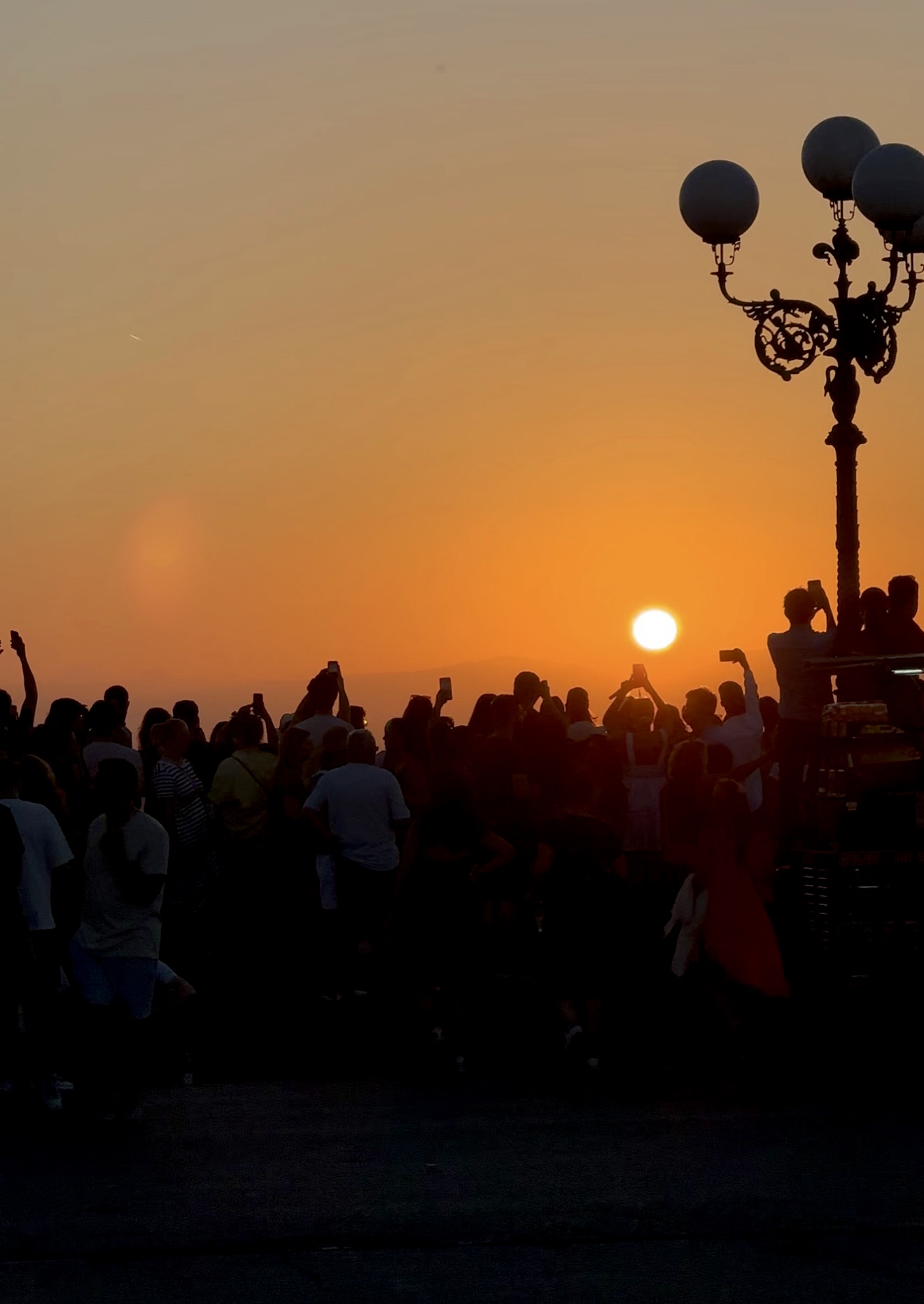
Golden hour at Piazzale Michelangelo Florence
Still, in researching her book, it became clear that the word “overtourism” too often cast a binary judgment without taking into account the nuances of travel. After all, so much of overcrowdedness is specific, McClanahan said, to “a place and a date” and even “the time of day.” Iceland, as The Guardian notes in this interview of the writer, became a sort of poster child for overtourism, when, in reality, McClanahan said, so much of the country was literally empty.
But activists like Pardo Rivacoba are resistant to the “go there, not here” strategy, finding it a way of simply shifting tourists around and not reducing numbers in areas that are overcrowded.
“Even if you come to Barcelona and the City Council tells you, ‘Look, there are beautiful places other than the Sagrada Familia,’ you won’t stop coming to the Sagrada Familia,” he said. “We say that these kinds of policies are just a mask for new tourism growth policies.”
Experts say the future lies in preparation and balance. Where Barcelona perhaps erred is by encouraging tourists to come “for years and years and years,” McClanahan said, without actually creating a sustainable infrastructure to handle the influx of people.
“They end up with a huge mess and they end up with locals who are really unhappy with what tourism is doing to and in their city,” she said.
The issue, activists say, has never been individual. It’s the reason why we can’t necessarily break people into “Good Tourist” and “Bad Tourist” groups.
“You or I as a tourist can’t decide the sustainability of our travels,” Pardo Rivacoba said. “You can somehow try to reduce it by not taking planes and taking trains, but then you will need some kind of accommodation. Even if you were the cleanest person in the world, you are just one in the crowd, and the general dynamics that tourism brings to a city or a territory don’t depend on the person.”
In an effort to limit some of the negative effects of tourism, Italy’s municipalities and the nation have in recent years enacted regulatory measures, from Venice’s infamous entrance fee to Florence’s ban on new short-term rentals in the historic center. While Italy hasn’t exactly been at the forefront of instituting restrictions on tourism, said McClanahan, who has most closely followed discussions in Venice, Florence, and Milan, it’s certainly not the very last to jump on board.
“What I’ve noticed in those Italian cities is increasing awareness of the challenges of tourism and the need to regulate tourist behavior and activity in those cities, which is very much in line with what we’re seeing in cities like Barcelona, Paris, Amsterdam, and Lisbon, to some extent,” she said. “It’s very much a part of the trend in terms of European cities that are waking up and taking action to make sure that tourism works on behalf of residents as well as on behalf of visitors.”
Broken down into categories, we outline some of the prominent policies that have been implemented in recent years to combat the issue—not with promotion or critique, but to show what steps have been taken so far, even if their success (or failure) remains to be seen.
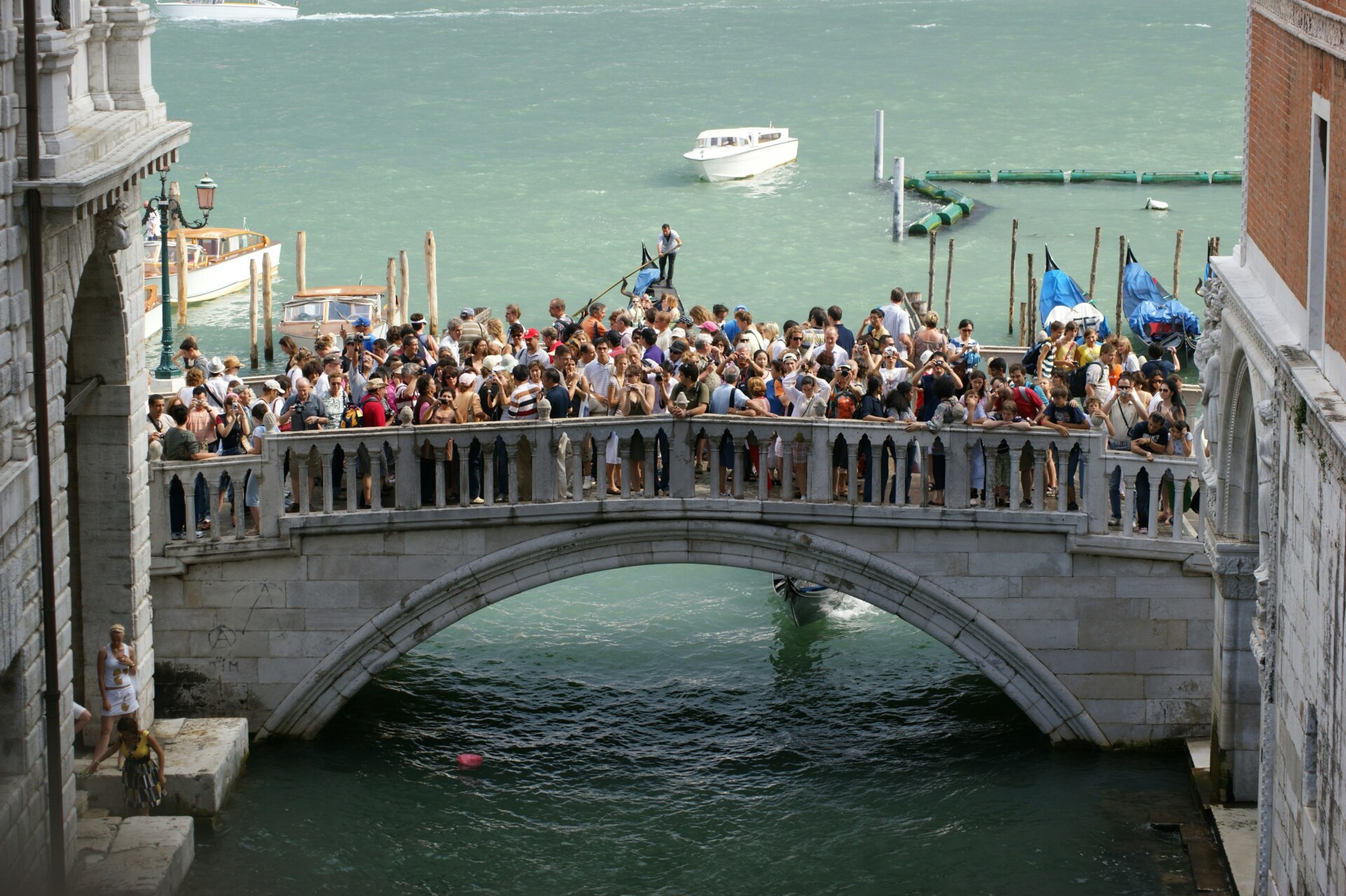
Will Venice's entrance fee help mitigate the crowds?
Accommodation
- Beginning September 1st, all short-term or tourist rentals in Italy must now be part of a national database of short-term rental properties. This requires all tourist rentals in Italy to have an identification code—apartments without the code will be subject to penalties between 5,000 and 8,000 euro. Perhaps more importantly, according to Il Messaggero reporting, companies that manage online tourist reservations, like Airbnb and Booking, have agreed to not allow rental listings from apartments without this code.
- Managers of short-term rentals in Italy can no longer use lockboxes and remote check-ins, per a policy enacted at the end of 2024. France 24 cites “security concerns” as the reason behind the change. More than 25,000 properties in Rome, for example, are listed on short-term rental platforms.
- In December 2023, Florence became the first Italian city, per Skift, to ban new short-term rental properties in the historic center. The move also offered an incentive to existing landlords of three years of tax breaks if they changed from a short-term to a standard lease, according to Reuters reporting. At the time, then-mayor Dario Nardella said that the number of short-term rentals in Florence had more than doubled between 2016 and 2023, from around 6,000 to more than 14,000.
- Airbnb was forced to pay 576 million euro in back taxes to the Italian government from roughly 779 million euros in short-term rental taxes it did not pay for Italian landlords between 2017 and 2021, per Italian prosecutors. The platform said at the time that it would introduce a system to automatically withhold taxes for Italian hosts.
What more could be done?
The answer, most often, comes in the form of regulation, said Epler Wood.
“Any place that doesn’t have a regulatory structure around short-term rentals should have one if they have a lot of tourism,” she said. “We recommend zoning and planning for municipalities as a very important tool in general for what we call visitor management.”
McClanahan also suggests Fairbnb, a cooperative founded by Venetian Emanuele Dal Carlo, according to BBC. The platform gives 50% of its fees to support a community project.
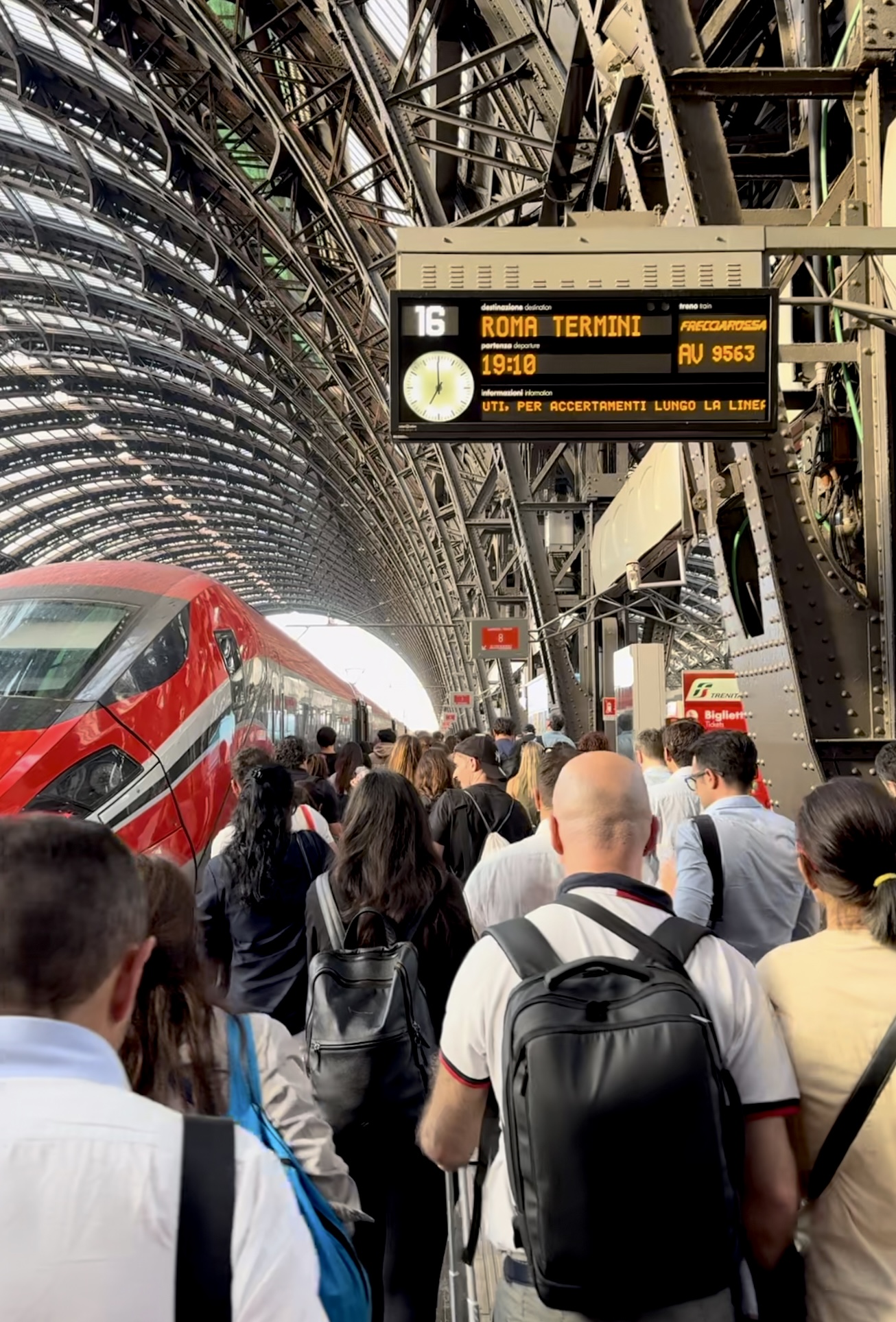
Better book those train tickets sooner rather than later
Transportation
- In 2021, Italy announced that large cruise ships would be banned from entering Venice. This was enacted in part for environmental and overcrowding reasons, as Venice was at risk of being put on UNESCO’s list of “World Heritage in Danger” sites. The city’s lagoon was also deemed a national monument.
- Italy’s public train operator, Trenitalia, announced in 2019 improvements to the railway between Rome and Abruzzo’s Pescara, which would shorten the travel time between the two destinations from three hours and 20 minutes to around two hours. Work was supposed to be finished around 2024, per Trenitalia’s website, but it only began last month.
- Trenitalia’s touristic lines often highlight historic trains or otherwise little-frequented routes. While they usually aren’t offered throughout the whole year, recent options include a train between Naples and the baths of Contursi and an express line between Rome and Assisi.
- A new airport by the Amalfi Coast opened last summer, Salerno Costa d’Amalfi, originally created for military use. While the airport’s new passenger terminal won’t be fully operational until at least 2026, some flight routes, including connections to Verona and Nantes, France, began last year.
What more could be done?
Pardo Rivacoba finds compelling the Dutch government’s plan to reduce air traffic at Amsterdam’s Schiphol airport by 4%, or at least 22,000 flights per year. The initiative was initially touted as a way to reduce noise pollution and was supposed to decrease the cap by almost 50,000 flights, but it encountered resistance from airlines.
“The reduction of air traffic in Amsterdam has been very complicated, but it’s working,” Pardo Rivacoba said. “It’s a great example and also a demonstration that it can be done.”
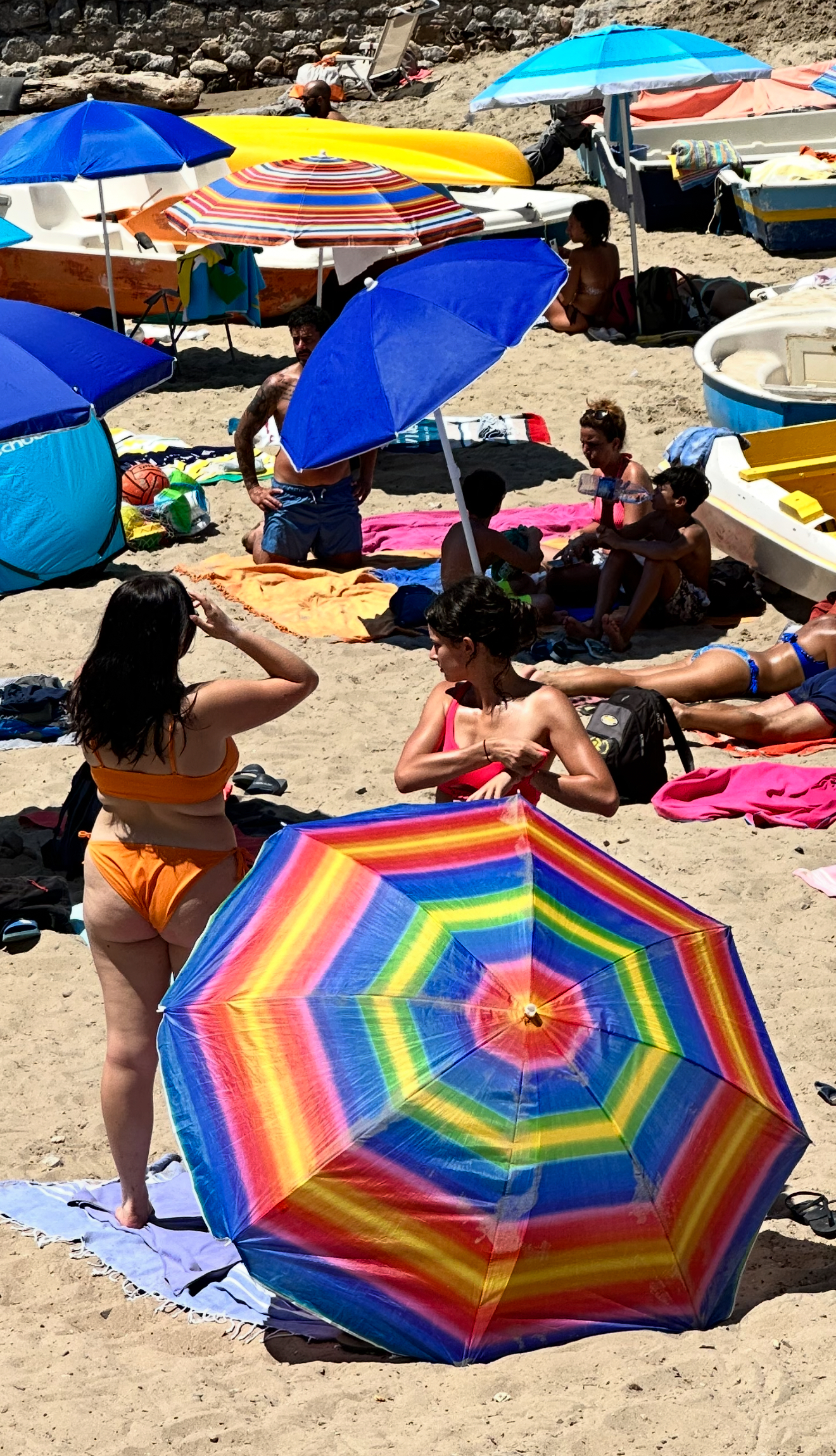
Prime beach real estate is hard to come by in Liguria
Hospitality
- Italy’s famous Alto Adige, which is home to the sweeping Dolomites mountain range, set a limit on overnight visitors in 2023, keeping numbers at 2019 levels and banning new hotel openings. “We reached the limit of our resources, we had problems with traffic, and residents have difficulty finding places to live,” said regional council member Arnold Schuler to CNN.
- A number of beaches in Sardinia’s Baunei are now capping the number of daily visitors at between 250 and 700, per a CNN article from 2023. Spots on the beach must be booked at least 72 hours in advance and at least one beach has an entrance fee. The island’s famous La Pelosa beach has also limited tourists to 1,500 a day with a 3.50 euro entrance fee, which is a big gulf from the roughly 38,000 tourists that it saw one August day, according to the city’s mayor.
- Venice is continuing to institute its five-euro entrance fee for tourists who stay only for the day, this year keeping it in place for up to 54 days, according to reporting from The New York Times. Still, data from last year showed that attendance was actually higher on days when the entrance fee was in place. Venice has also banned tour groups of more than 25 people.
- Florence announced a 10-point plan last fall with bans on golf carts, rickshaws, and loudspeakers used by tour guides. The policy was in part a reaction to the statistic that 95% of tourists in Florence are centered in five kilometers of the city.
What more could be done?
Much like Venice’s entrance fee, tourist taxes are another way to maximize and distribute the economic benefits of tourism, McClanahan said. In Amsterdam, the hotel tax went up from seven to 12.5% last year. In a 2023 New York Times interview with McClanahan, the city’s deputy mayor said that proceeds from the tax would be used to improve parts of the city that did not frequently see tourists.
“The one kind of common denominator is a government that’s paying attention to its citizens and its residents and their complaints,” McClanahan said. “And they are taking a really proactive, creative, and innovative approach to specifically addressing those complaints.”
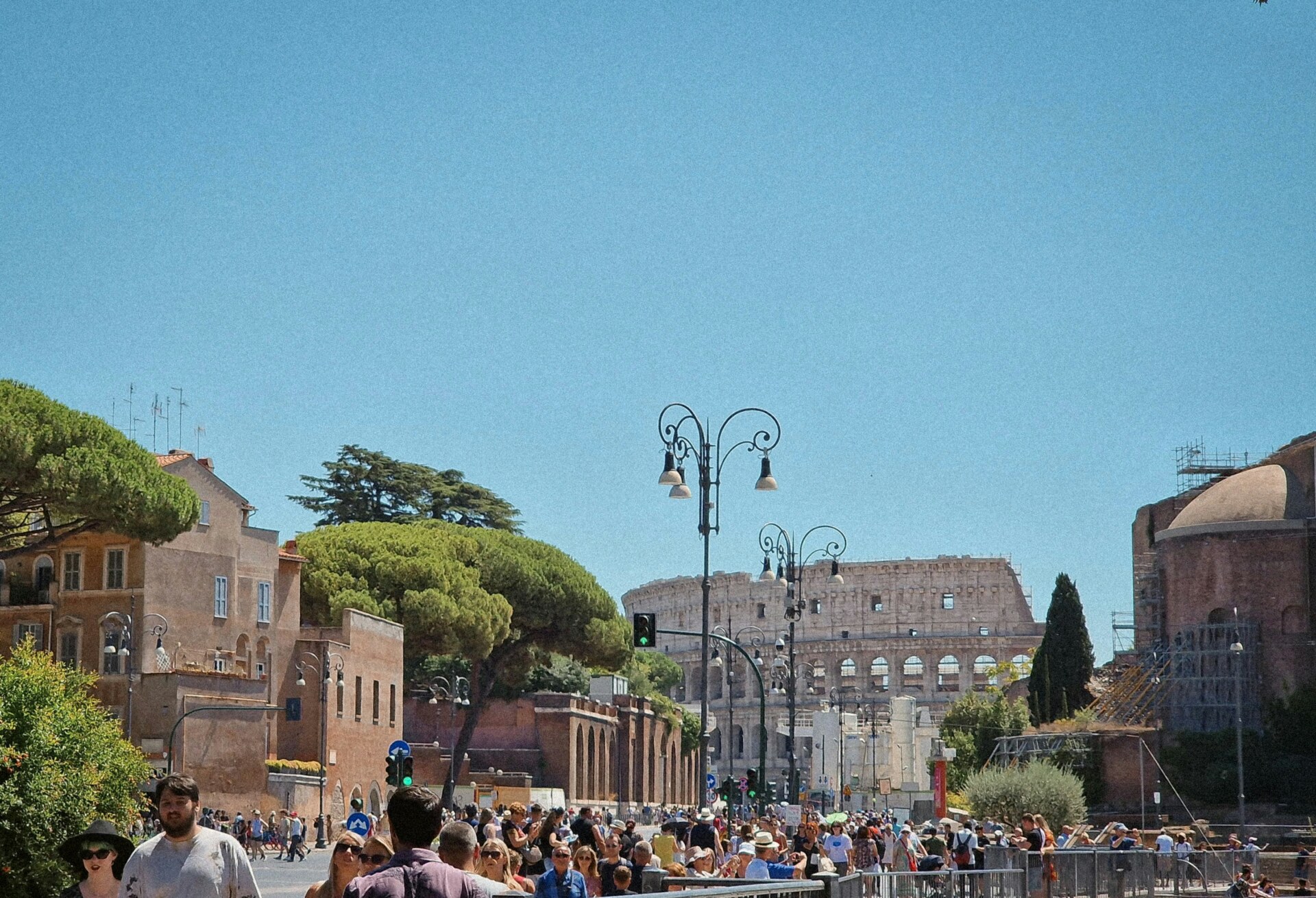
Another well-trodden path in Rome
Education/Culture
- In a move that surprised the world, Rome decided to ticket the country’s most visited cultural site, the Pantheon, instituting a 5 euro fee in July 2023 to enter and requiring a mandatory reservation to a site that had once been completely open to the public. (It’s worth noting that the Pantheon, also known now as the Basilica di Santa Maria ad Martyres, is still a working church.)
- In 2022, Italy’s Ministry of Tourism and National Tourism Board launched a campaign dedicated to the promotion of slow tourism, including marketing established walking routes and small villages to visit in the country. Unfortunately, the site appears to no longer work, but it does show a possible public strategy to sponsor a different kind of travel.
- The popular archaeological site of Pompeii, which is practically a can’t-miss site in Italy, has now limited its daily numbers to 20,000 a day. At one point, officials recorded a high of more than 36,000 entrances on one of the first Sundays of the month in which there is free entry.
- Various platforms are working to shed light on Italy’s lesser-known corners, challenging the dominance of the well-trodden tourist circuit. Our very own Italy Segreta, for instance, highlights overlooked regions and destinations for a more intimate, layered portrait of the country. A similar initiative is Unexpected Italy, an app and guide founded by Elisabetta Faggiana and Savio Losito (from Vicenza and Puglia, respectively), who organized an itinerary for a story I wrote on the Palladian villas of the Veneto.
What more could be done?
As a strategy, Pardo Rivacoba is actually against the ticketing of attractions. He points to Barcelona’s famous Park Güell, which requires reservations and is limited to 1,400 visitors per hour, according to its site.
“It’s the management of a city like a theme park,” he said. “Privatizing was not the solution. The park is still overcrowded and the environments are crowded too. It’s a way to make tourism for the elite, which is one of the preferences of the tourism industry right now.”


